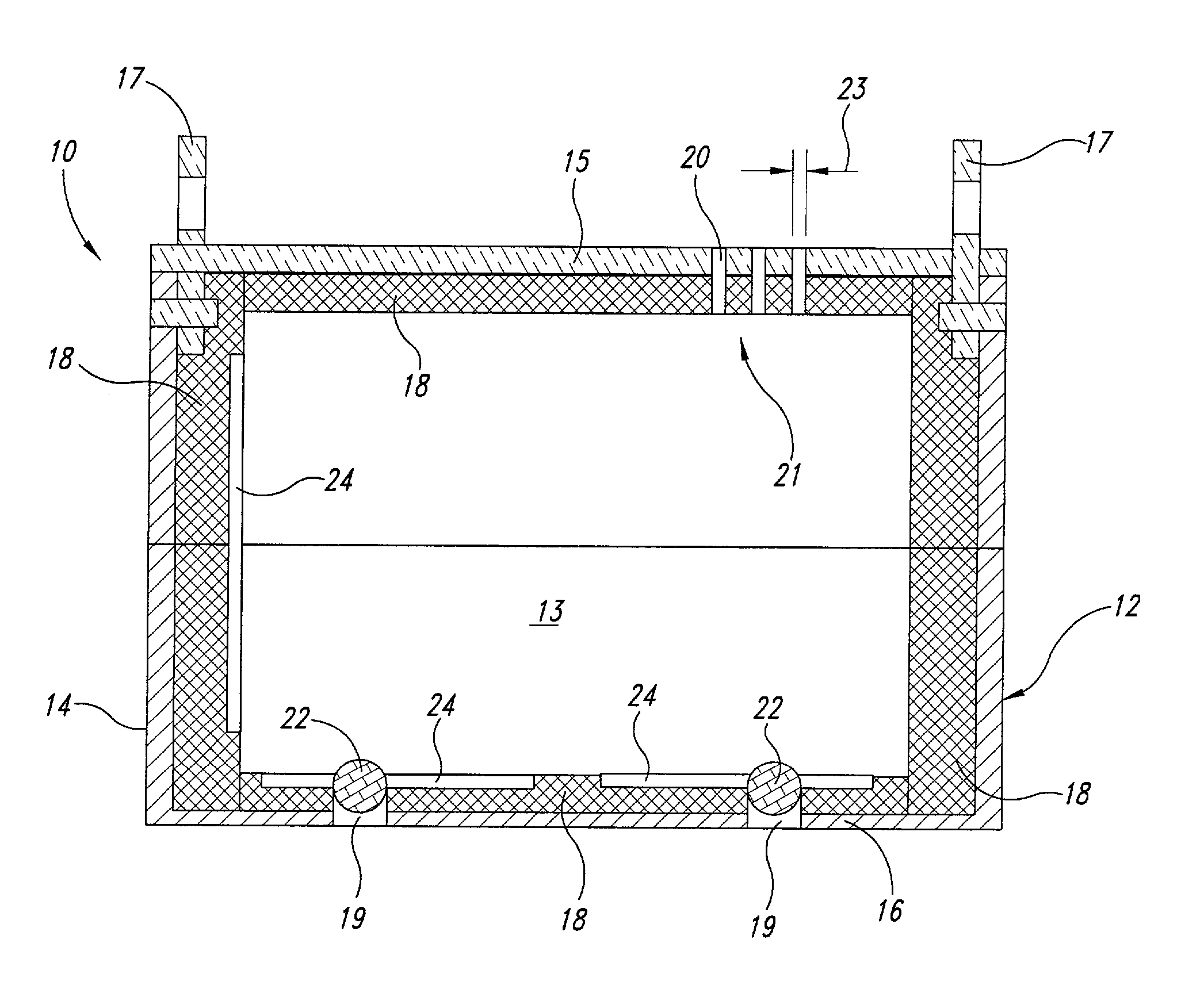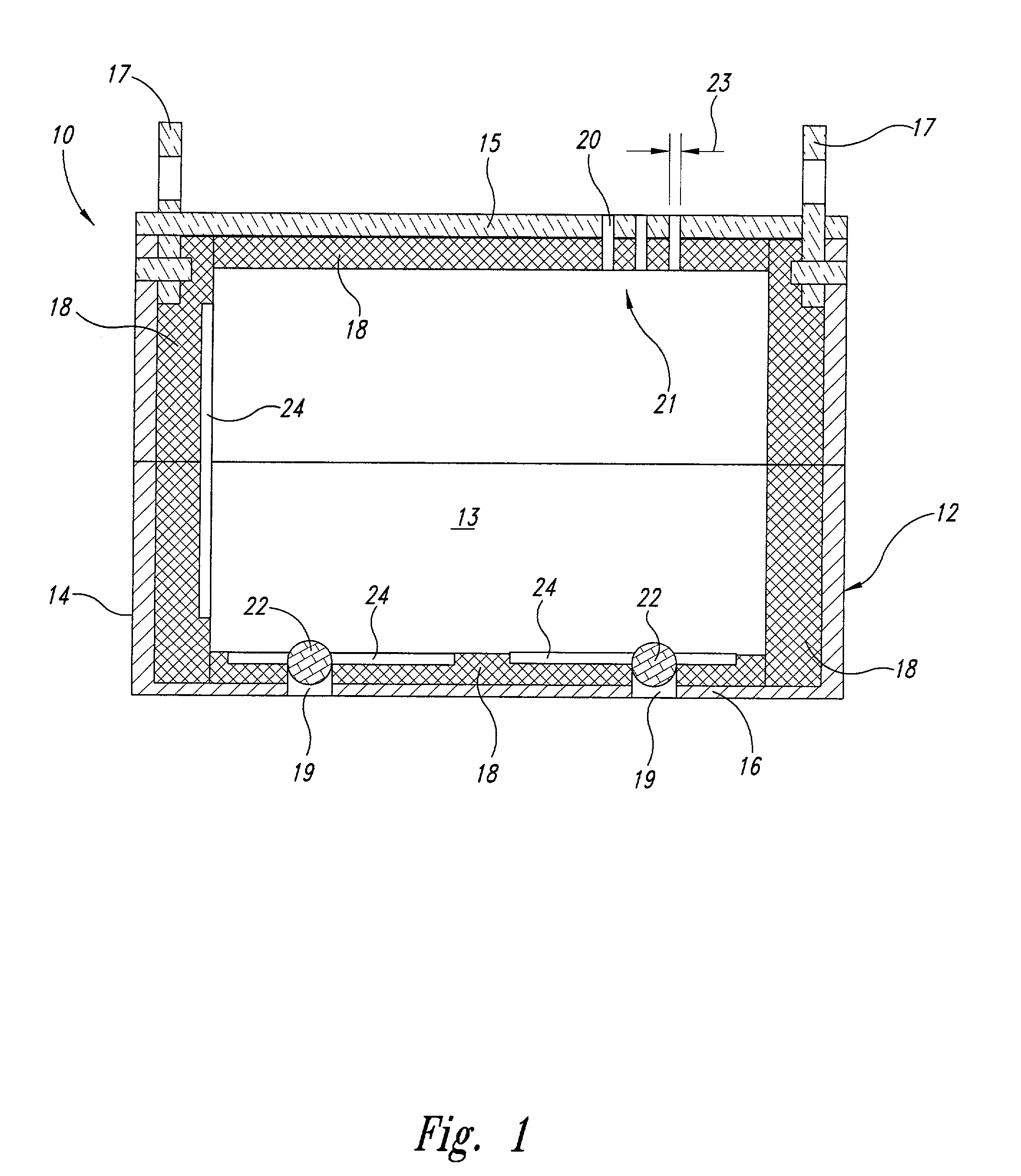Method for high pressure treatment of substances under controlled temperature conditions
a technology of controlled temperature and treatment method, applied in the direction of pressure vessel for chemical process, pressurized chemical process, disinfection, etc., can solve the problems of reducing the ability of the pressure process to inactivate microorganisms, hotter products and pressure media, etc., to reduce the amount of heat transferred and prevent heat loss
- Summary
- Abstract
- Description
- Claims
- Application Information
AI Technical Summary
Benefits of technology
Problems solved by technology
Method used
Image
Examples
Embodiment Construction
[0012]Many objectives may be achieved by exposing a substance to ultrahigh-pressure. Such pressure processing may be used, for example, to pasteurize or sterilize a substance, such as a medical or food product. Although the selected pressure will vary depending on the application, pressures in the range of 40,000-130,000 psi are often used and thought of when referring to ultrahigh-pressure processing. It will be understood that other variables in the process are also selected according to the application, as determined by one of ordinary skill in the art. These other variables include such things as the temperature at which the substance is processed and the amount of time the substance is held under pressure, commonly referred to as the dwell time.
[0013]Current pressure processing of a substance, for example, to destroy microorganisms, can be done in a continuous flow process or in batches. In conventional batch processing, the product or substance to be pressure treated is placed...
PUM
| Property | Measurement | Unit |
|---|---|---|
| Temperature | aaaaa | aaaaa |
| Pressure | aaaaa | aaaaa |
| Temperature | aaaaa | aaaaa |
Abstract
Description
Claims
Application Information
 Login to View More
Login to View More - R&D
- Intellectual Property
- Life Sciences
- Materials
- Tech Scout
- Unparalleled Data Quality
- Higher Quality Content
- 60% Fewer Hallucinations
Browse by: Latest US Patents, China's latest patents, Technical Efficacy Thesaurus, Application Domain, Technology Topic, Popular Technical Reports.
© 2025 PatSnap. All rights reserved.Legal|Privacy policy|Modern Slavery Act Transparency Statement|Sitemap|About US| Contact US: help@patsnap.com



